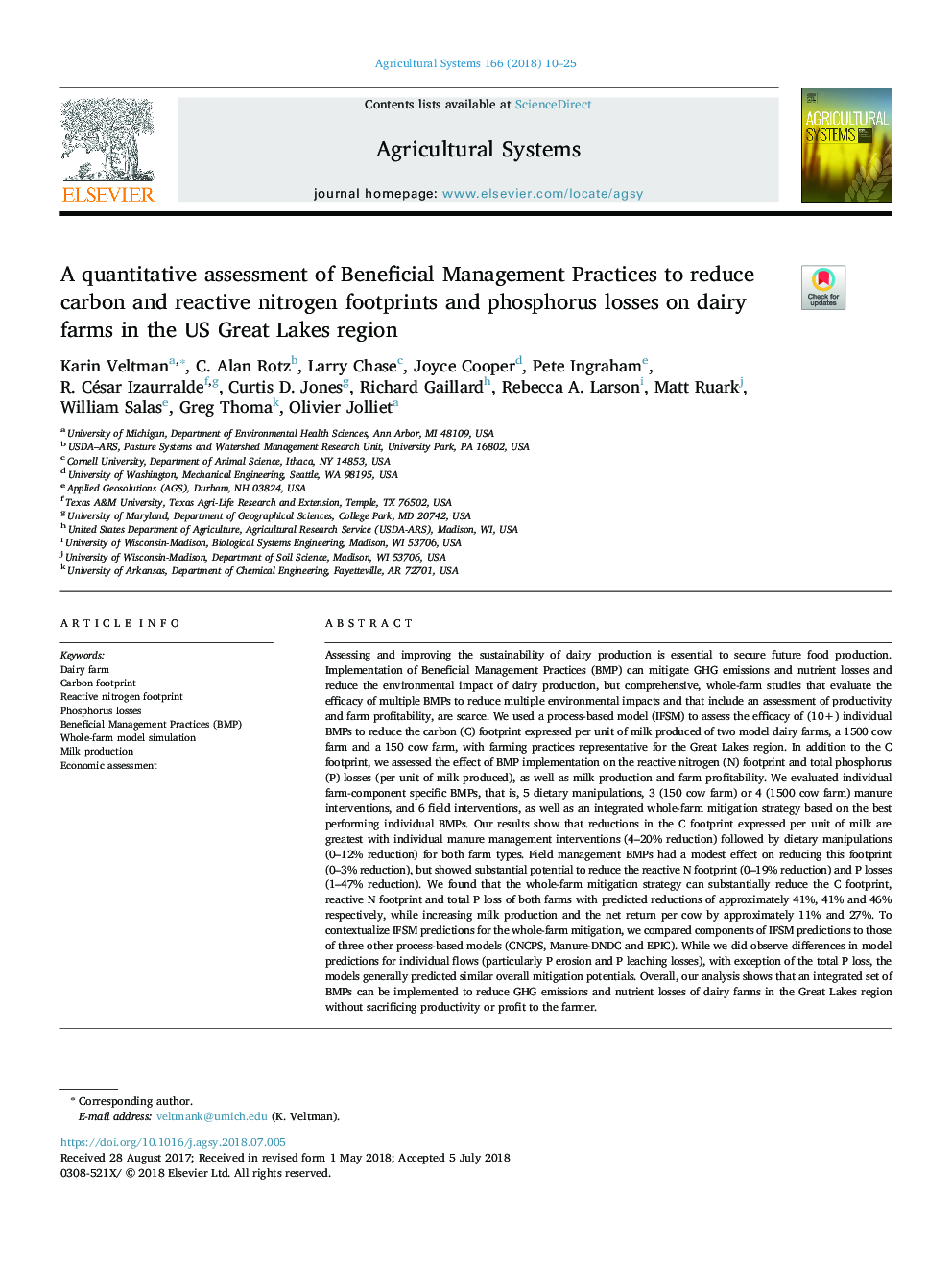| کد مقاله | کد نشریه | سال انتشار | مقاله انگلیسی | نسخه تمام متن |
|---|---|---|---|---|
| 8874879 | 1623204 | 2018 | 16 صفحه PDF | دانلود رایگان |
عنوان انگلیسی مقاله ISI
A quantitative assessment of Beneficial Management Practices to reduce carbon and reactive nitrogen footprints and phosphorus losses on dairy farms in the US Great Lakes region
ترجمه فارسی عنوان
ارزیابی کمی از اقدامات مدیریت سودمند برای کاهش اثرات کربن و واکنش نیتروژن و تلفات فسفر در مزارع لبنی در منطقه دریاچه های بزرگ ایالات
دانلود مقاله + سفارش ترجمه
دانلود مقاله ISI انگلیسی
رایگان برای ایرانیان
کلمات کلیدی
موضوعات مرتبط
علوم زیستی و بیوفناوری
علوم کشاورزی و بیولوژیک
علوم کشاورزی و بیولوژیک (عمومی)
چکیده انگلیسی
Assessing and improving the sustainability of dairy production is essential to secure future food production. Implementation of Beneficial Management Practices (BMP) can mitigate GHG emissions and nutrient losses and reduce the environmental impact of dairy production, but comprehensive, whole-farm studies that evaluate the efficacy of multiple BMPs to reduce multiple environmental impacts and that include an assessment of productivity and farm profitability, are scarce. We used a process-based model (IFSM) to assess the efficacy of (10+) individual BMPs to reduce the carbon (C) footprint expressed per unit of milk produced of two model dairy farms, a 1500 cow farm and a 150 cow farm, with farming practices representative for the Great Lakes region. In addition to the C footprint, we assessed the effect of BMP implementation on the reactive nitrogen (N) footprint and total phosphorus (P) losses (per unit of milk produced), as well as milk production and farm profitability. We evaluated individual farm-component specific BMPs, that is, 5 dietary manipulations, 3 (150 cow farm) or 4 (1500 cow farm) manure interventions, and 6 field interventions, as well as an integrated whole-farm mitigation strategy based on the best performing individual BMPs. Our results show that reductions in the C footprint expressed per unit of milk are greatest with individual manure management interventions (4-20% reduction) followed by dietary manipulations (0-12% reduction) for both farm types. Field management BMPs had a modest effect on reducing this footprint (0-3% reduction), but showed substantial potential to reduce the reactive N footprint (0-19% reduction) and P losses (1-47% reduction). We found that the whole-farm mitigation strategy can substantially reduce the C footprint, reactive N footprint and total P loss of both farms with predicted reductions of approximately 41%, 41% and 46% respectively, while increasing milk production and the net return per cow by approximately 11% and 27%. To contextualize IFSM predictions for the whole-farm mitigation, we compared components of IFSM predictions to those of three other process-based models (CNCPS, Manure-DNDC and EPIC). While we did observe differences in model predictions for individual flows (particularly P erosion and P leaching losses), with exception of the total P loss, the models generally predicted similar overall mitigation potentials. Overall, our analysis shows that an integrated set of BMPs can be implemented to reduce GHG emissions and nutrient losses of dairy farms in the Great Lakes region without sacrificing productivity or profit to the farmer.
ناشر
Database: Elsevier - ScienceDirect (ساینس دایرکت)
Journal: Agricultural Systems - Volume 166, October 2018, Pages 10-25
Journal: Agricultural Systems - Volume 166, October 2018, Pages 10-25
نویسندگان
Karin Veltman, C. Alan Rotz, Larry Chase, Joyce Cooper, Pete Ingraham, R. César Izaurralde, Curtis D. Jones, Richard Gaillard, Rebecca A. Larson, Matt Ruark, William Salas, Greg Thoma, Olivier Jolliet,
